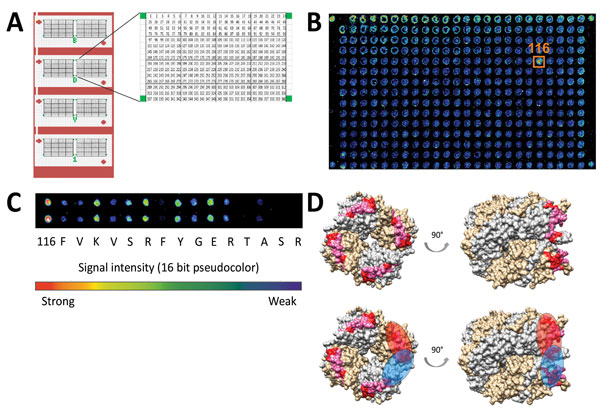Occupation-Associated Fatal Limbic Encephalitis Caused by Variegated Squirrel Bornavirus 1, Germany, 2013
Dennis Tappe

, Kore Schlottau, Daniel Cadar, Bernd Hoffmann, Lorenz Balke, Burkhard Bewig, Donata Hoffmann, Philip Eisermann, Helmut Fickenscher, Andi Krumbholz, Helmut Laufs, Monika Huhndorf, Maria Rosenthal, Walter Schulz-Schaeffer, Gabriele Ismer, Sven-Kevin Hotop, Mark Brönstrup, Anthonina Ott, Jonas Schmidt-Chanasit
1, and Martin Beer
1
Author affiliations: Bernhard Nocht Institute for Tropical Medicine, Hamburg, Germany (D. Tappe, D. Cadar, P. Eisermann, M. Rosenthal, J. Schmidt-Chanasit); Friedrich-Loeffler-Institut, Greifswald-Insel Riems, Germany (K. Schlottau, B. Hoffmann, D. Hoffmann, M. Beer); University Medical Center Schleswig-Holstein, Kiel, Germany (L. Balke, B. Bewig, H. Laufs, M. Huhndorf); Christian-Albrecht University of Kiel and University Medical Center, Kiel (H. Fickenscher, A. Krumbholz); Saarland University Medical Center, Homburg, Germany (W. Schulz-Schaeffer); Zoological Garden, Schleswig-Holstein, Germany (G. Ismer); Helmholtz Centre for Infection Research and German Centre for Infection Research, Braunschweig, Germany (S.-K. Hotop, M. Brönstrup); Euroimmun AG, Lübeck, Germany (A. Ott); German Centre for Infection Research, Hamburg (J. Schmidt-Chanasit)
Main Article
Figure 4

Figure 4. N protein (p40) peptide microarray–based epitope mapping of variegated squirrel bornavirus 1 from patient who died of limbic encephalitis, Germany, 2013. A) The N protein–based peptide microarray chip consists of 8 identical arrays composed of 360 15-mer peptides with an offset of 1 aa. Each subarray was bordered by biotin spots (green). B) Representative single-channel readouts from 1 subarray in 16-bit pseudocolor is given for the protein A–purified patient cerebrospinal fluid sample. Signals were classified positive if they appeared in each of the 8 subarrays. The detected signal is surrounded by an orange box and labeled by the corresponding spot number. C) The alanine scan of spot 116 showed highest antibody binding for the original sequence and less bound antibodies after substitution of the indicated amino acids by alanine. D) Mapping of antibody target sequences onto the tetrameric P40 nucleoprotein 3D-structure (PDB:1N93). Monomers are depicted in gray and gold, amino acids necessary for antibody binding (red) and inconsequential (pink) related to spot 116. Potential binding sites of antibodies for spot 116 are shown in the lower panels as red (1 monomer) and blue (spanning 2 adjacent monomers and forming a binding pocket) overlay.
Main Article
Page created: May 18, 2018
Page updated: May 18, 2018
Page reviewed: May 18, 2018
The conclusions, findings, and opinions expressed by authors contributing to this journal do not necessarily reflect the official position of the U.S. Department of Health and Human Services, the Public Health Service, the Centers for Disease Control and Prevention, or the authors' affiliated institutions. Use of trade names is for identification only and does not imply endorsement by any of the groups named above.
